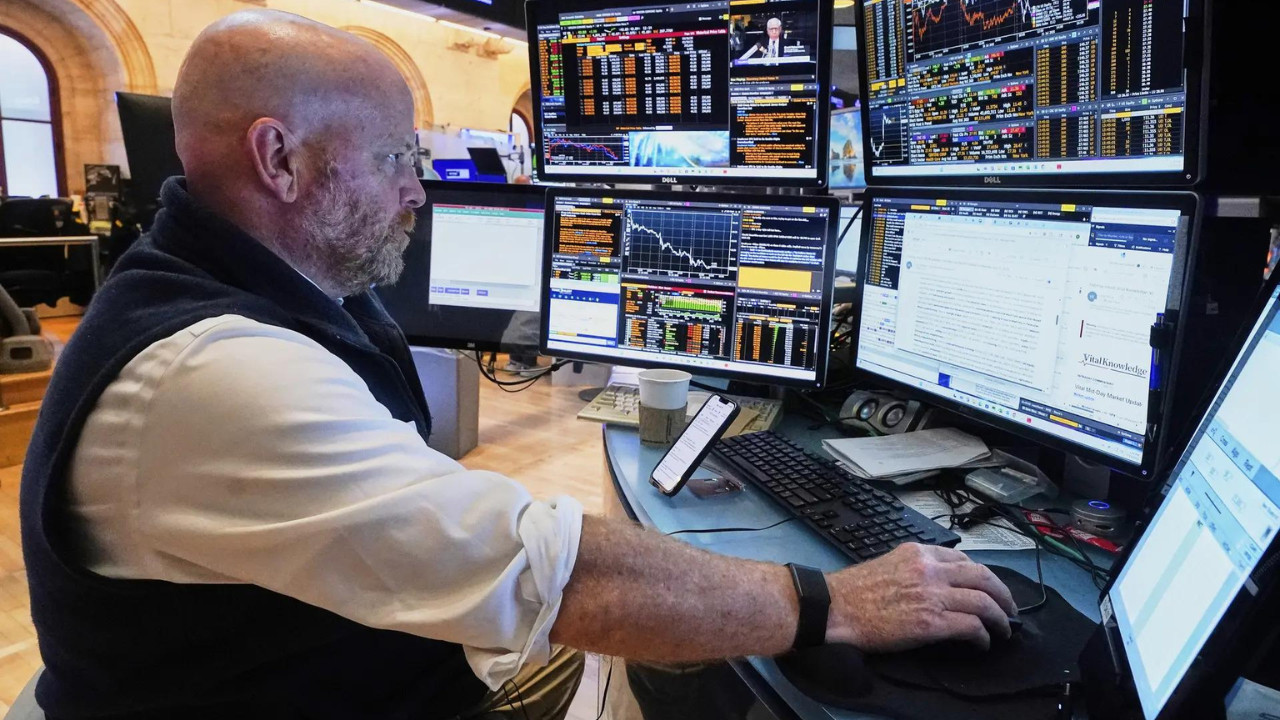Wall Street saw modest gains, with the S&P 500 and Nasdaq reaching new highs, as investors awaited the Federal Reserve’s rate decision and developments in US-China trade talks. JetBlue and SoFi Technologies surged on strong results, while Merck and UnitedHealth Group declined after disappointing earnings. Negotiations continued in Stockholm amid tariff deadlines.
Navigating the Choppy Waters: What’s Steering the US Stock Market?
The US stock market has been a bit of a rollercoaster lately, hasn’t it? One day it’s soaring on optimism, the next it’s dipping its toes into uncertainty. It’s enough to give even seasoned investors a bit of whiplash. So, what’s really behind these market fluctuations? Let’s dive in and unpack the key factors that are currently influencing Wall Street.
Decoding the Signals: Economic Indicators and the Fed
Interest rates, inflation whispers, and the pronouncements of the Federal Reserve – these are the compass and charts guiding the ship that is the US economy. The market’s recent moves have been heavily influenced by speculation surrounding the Fed’s next steps. Are they going to hold steady, hinting at a longer period of higher rates to truly tame inflation? Or will they signal a shift, perhaps even hinting at a rate cut down the line? The answer to this question sends ripples through every sector.
The latest economic data is adding another layer to the puzzle. While inflation has cooled somewhat, it’s still stubbornly above the Fed’s target. This creates a tricky balancing act: the Fed needs to curb inflation without triggering a recession. This balancing act creates suspense for investors.

The China Connection: Trade Tensions and Global Growth
Across the globe, developments in China are adding to the market’s complexity. Trade relations between the US and China remain a point of concern, with the potential for tariff adjustments always looming. These discussions significantly influence investor sentiment, especially for companies with extensive operations or supply chains in China. A thaw in relations could boost confidence, while renewed tensions could send shivers down Wall Street.
Beyond trade, China’s economic growth also plays a crucial role. As the world’s second-largest economy, China’s performance has a direct impact on global demand and corporate earnings. Any signs of weakness in the Chinese economy can raise concerns about the outlook for multinational corporations, leading to market volatility.
Corporate Earnings: Peeking Behind the Curtain
Of course, the bedrock of any stock market performance is the health of individual companies. Earnings season provides a vital glimpse into how businesses are faring in the current economic climate. Strong earnings reports, particularly from bellwether companies, can boost market sentiment. Conversely, disappointing results can trigger sell-offs and drag down entire sectors.
Recently, the performance of healthcare giants like UnitedHealth and Merck has drawn scrutiny. Any stumble from these industry leaders can have an outsized impact on the broader market, demonstrating just how interconnected everything is. Airlines, like JetBlue, also face unique pressures based on travel demand and fuel costs.
Navigating the Volatility: Strategies for Investors
So, what does all this mean for investors trying to navigate these choppy waters of the US stock market? First, it’s essential to stay informed. Keeping abreast of economic data, Fed announcements, and geopolitical developments is crucial for understanding the forces shaping the market.
Second, diversification remains a cornerstone of sound investment strategy. Spreading your investments across different sectors and asset classes can help mitigate risk and cushion your portfolio against market downturns.
Third, remember that long-term perspective is key. Market fluctuations are a normal part of the investment cycle. Avoid making impulsive decisions based on short-term volatility. Instead, stick to your investment plan and focus on your long-term financial goals. Maybe you can link to a page on your website about creating a long-term financial strategy?
Looking Ahead: Staying Prepared for the Future of the US Stock Market
The US stock market will likely remain sensitive to economic data, policy decisions, and global events in the near future. There are more variables at play now than ever before. Vigilance and a well-informed strategy are the best tools for investors to weather the storms and capitalize on opportunities as they arise. The ongoing interplay between inflation, interest rates, and global economic conditions will ultimately determine the market’s trajectory.







